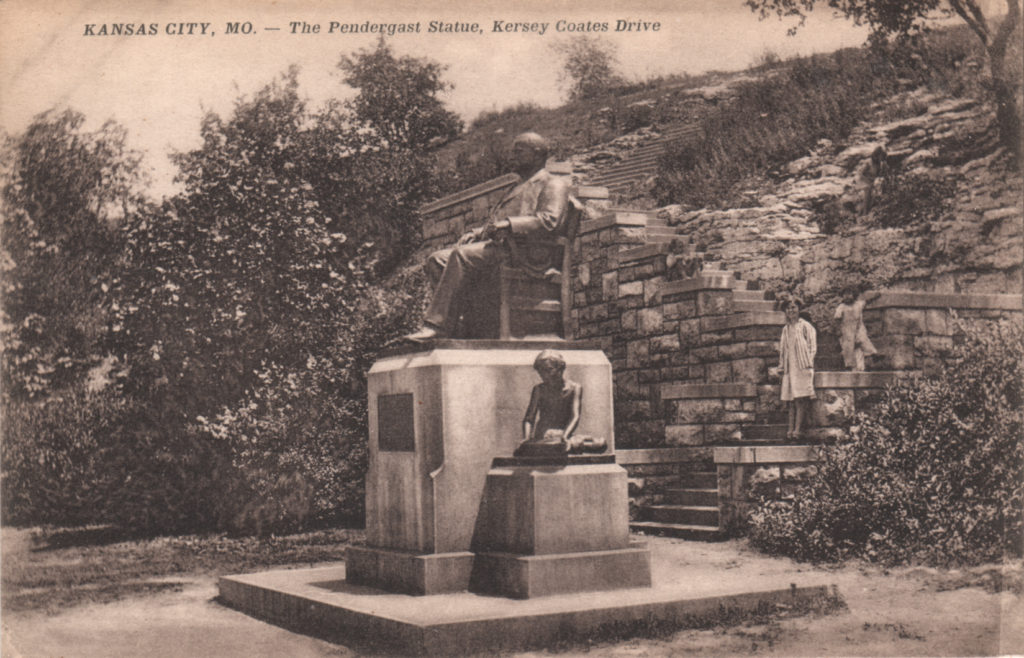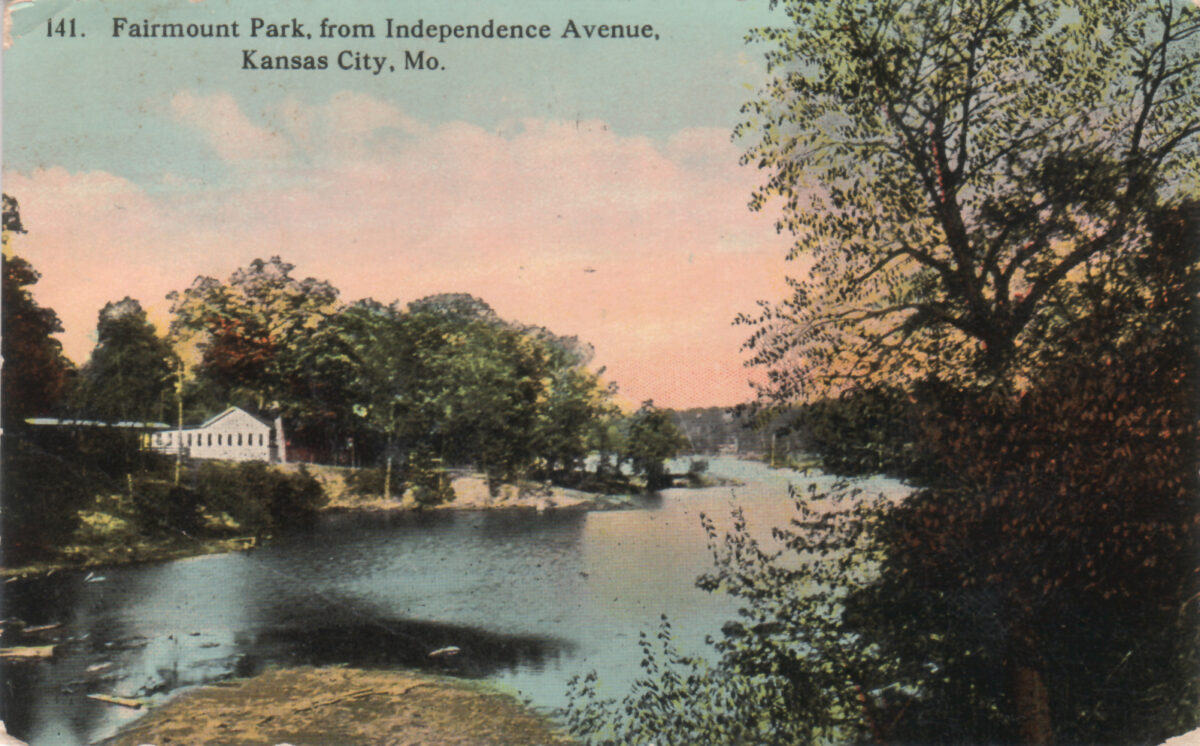Michael Bushnell
Northeast News
This week we feature a piece of Kansas City’s Irish history just in time for the upcoming St. Patrick’s Day festivities. The 1920s-published card depicts the statue of Alderman Jim Pendergast in its original location just below present-day Case Park, overlooking Pendergast’s beloved first ward in the city’s West Bottoms area.
Born in 1856 in the Ohio River town of Gallipolis, James Pendergast was the second of nine children. His Irish Catholic family later moved to Independence, Missouri to find work in the area factories and packing plants.
Pendergast worked as a laborer and had an affinity for playing the horses. After a single trip to the track, he won enough money on a horse named Climax to open a saloon in the then rough-and-tumble West Bottoms.
Pendergast was elected to the position of Alderman in 1892, a job he held until 1910. Alderman Jim was famous for his black Bismarck moustache and dapper dress. Pendergast was a true man of the people, cashing checks and granting favors for laborers in his St. Louis Avenue establishment, all in return for loyalty to Big Jim. His political faction of Goats was in a constant battle for power with Joe Shannon’s Rabbit faction for control over everything from illegal liquor and gambling to prostitution and deal fixing in the state capital, a practice carried over long after Jim’s death in 1911.
After Jim passed away, most of the business operations of the Pendergast Machine fell to his younger brothers, Tom and Mike, Tom being the front man and “face” of the operation. The Machine controlled all aspects of Missouri politics through the 1930s and the Great Depression, which was largely unfelt here in Kansas City due to Boss Tom’s corruption and skimming from such projects as the new City Hall project, the new County Courthouse and Municipal Auditorium, all completed through contracts with Pendergast-aligned companies, including the Ready-Mixed concrete owned by Tom Pendergast. Work was available to anyone who wanted it, as long as you were aligned with The Machine.
The Pendergast era came to an unceremonious end in 1945 when Tom was convicted of tax evasion. Throughout the trial, new evidence was discovered every day as to how deep the tentacles of the Pendergast Machine stretched into local, state and federal government.
This card is one in a series of sepia-tone postcards published by John Straley who lived at 213 N. Mersington Ave., right here in Historic Northeast.


















